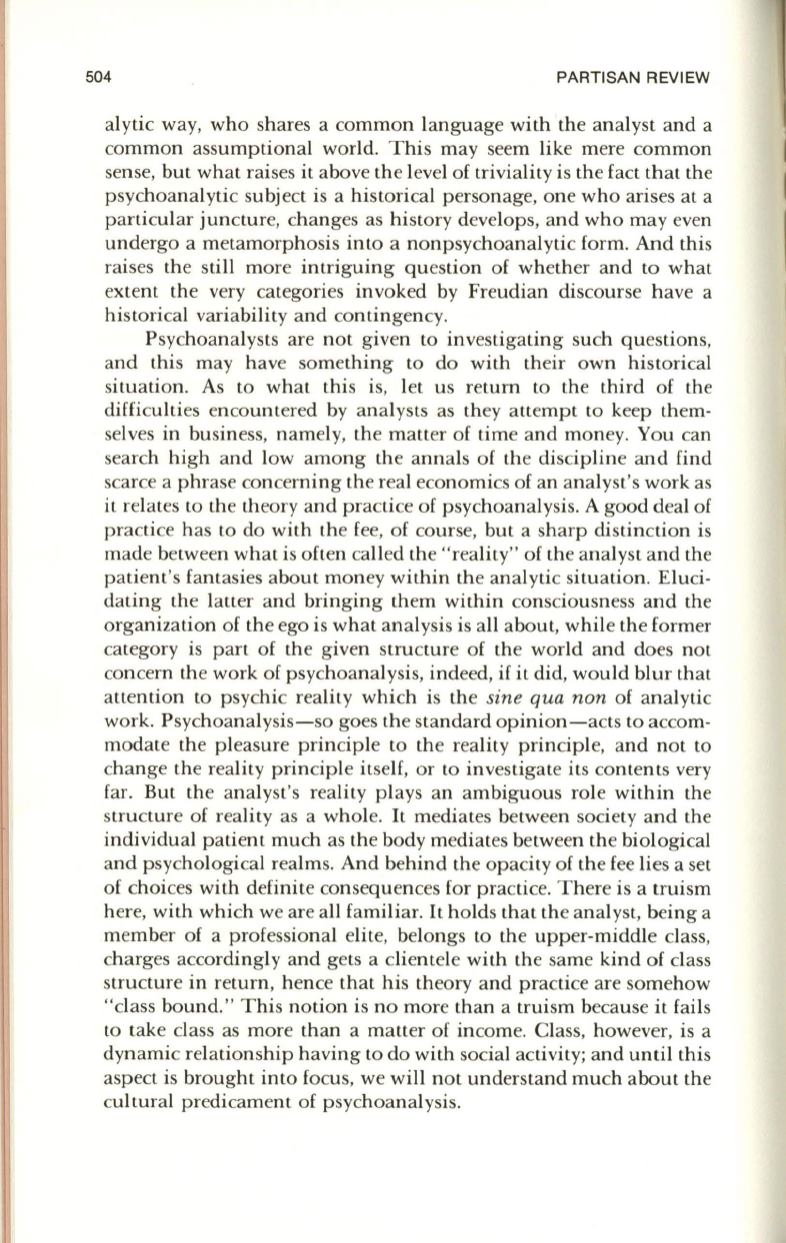
504
PARTISAN REVIEW
alytic way, who shares a common language with the analyst and a
common assumptional world. This may seem like mere common
sense, but what raises it above the level of triviality is the fact that the
psychoanalytic subject is a historical personage, one who arises at a
particular juncture, changes as history develops, and who may even
undergo a metamorphosis into a nonpsychoanalytic form. And this
raises the still more intriguing question of whether and to what
extent the very categories invoked by Freudian discourse have a
historical variability and contingency.
Psychoanalysts are not given to investigating such questions,
and this may have something to do with their own historical
situation. As to what this is, let us return to the third of the
difficulties encountered by analysts as they attempt to keep them–
selves in business, namely, the matter of time and money. You can
search high and low among the annals of the discipline and find
scarce a phrase concerning the real economics of an analyst's work as
it relates to the theory and practice of psychoanalysis. A good deal of
practice has to do with the fee, of course, but a sharp distinction is
made between what is often called the " reality" of the analyst and the
patient's fantasies about money within the analytic situation. Eluci–
dating the latter and bringing them within consciousness and the
organization of the ego is what analysis is all about, while the former
category is part of the given structure of the world and does not
concern the work of psychoanalysis, indeed, if it did, would blur that
attention to psychic reality which is the
sine qua non
of analytic
work. Psychoanalysis-so goes the standard opinion-acts to accom–
modate the pleasure principle to the reality principle, and not to
change the reality principle itself, or to investigate its contents very
far. But the analyst's reality plays an ambiguous role within the
structure of reality as a whole.
It
mediates between society and the
individual patient much as the body mediates between the biological
and psychological realms. And behind the opacity of the fee lies a set
of choices with definite consequences for practice. There is a truism
here, with which we are all familiar.
It
holds that the analyst, being a
member of a professional elite, belongs to the upper-middle class,
charges accordingly and gets a clientele with the same kind of class
structure in return, hence that his theory and practice are somehow
"class bound." This notion is no more than a truism because it fails
to take class as more than a matter of income. Class, however, is a
dynamic relationship having to do with social activity; and until this
aspect is brought into focus, we will not understand much about the
cuI tural predicament of psychoanalysis.


